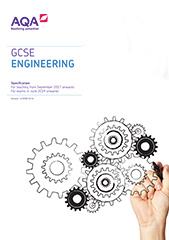3.4 Testing and investigation
Students should have knowledge and understanding of a range of testing and investigation methods. They should be able to apply relevant mathematical calculations when engineering a solution.
Modelling and calculating
Subject content |
Additional information |
Mathematical understanding |
|---|---|---|
Predicting performance in any of the systems referred to in Systems. |
Students will be expected to use calculations, simulations and modelling either manually or with Computer Aided Design (CAD) to:
Exam questions will not examine complex systems with more than four major component parts. |
|
Calculate:
|
E1, E2, E3, E4, E5, E6, E7, E8, E9, E10, E11, E12, E13, E14, E15 M1.1, M1.2, M2.3, M2.4, M3.2, M3.3, M3.4, M4.1, M4.2, M4.3, M4.4, M4.5 |
Testing
Students will be expected to understand and utilise the following testing methods.
Subject content |
Additional information |
Mathematical understanding |
|---|---|---|
Methods of testing and evaluating materials and structural behaviour under load, including determining tensile/compressive strength |
Students will be expected to use calculations, simulations and modelling either manually or with Computer Aided Design (CAD) to:
Exam questions will not examine complex systems with more than four major component parts. |
M4.1, M4.2 |
Destructive and non-destructive testing. |
The difference between these methods and the advantages of each. |
|
Testing control programs for programmable devices through modelling and enactment. |
M2.3, M3.1 |
|
Modifying a program to improve performance. |
Eg using a micro controller as part of an engineered solution. Changing parameters to adjust motor speed or sensor threshold ranges. |
|
Quality control methods. |
The use of quality control methods to ensure successful outcomes through the application of tolerances. Identifying and applying checks during the production process. |
M1.4, M2.2 |
Aerodynamics
Subject content |
Additional information |
Mathematical understanding |
|---|---|---|
Students will be expected to understand the following terms:
|
Students may be asked about these terms within a context and they should be able to give an example (eg when refining the design of a compressed gas powered dragster). Any appropriate example will be acceptable. |
